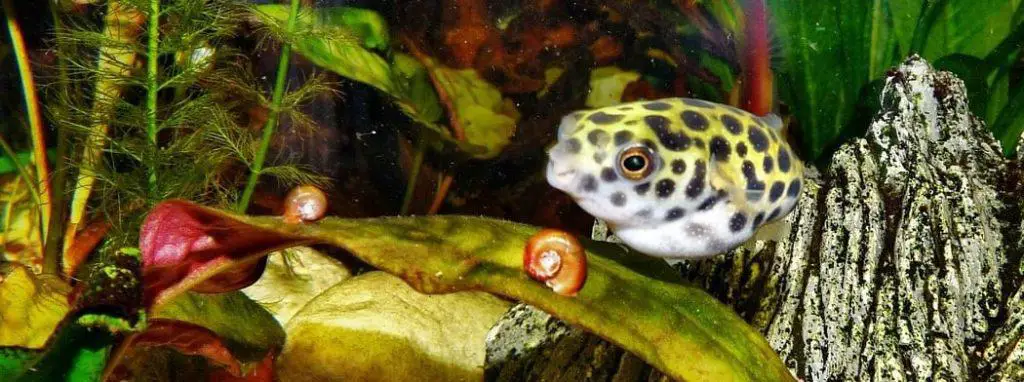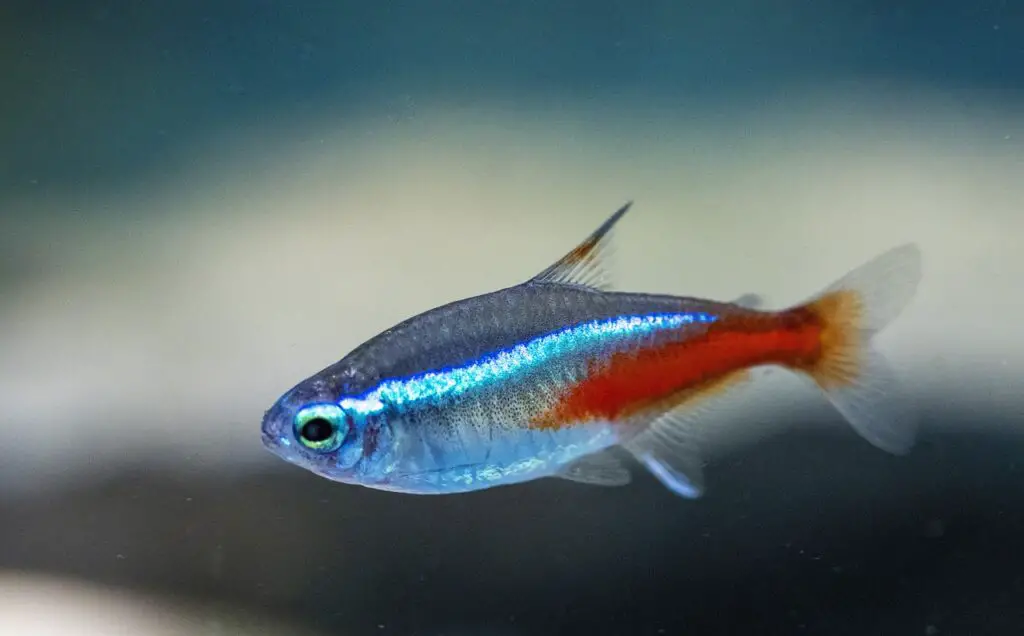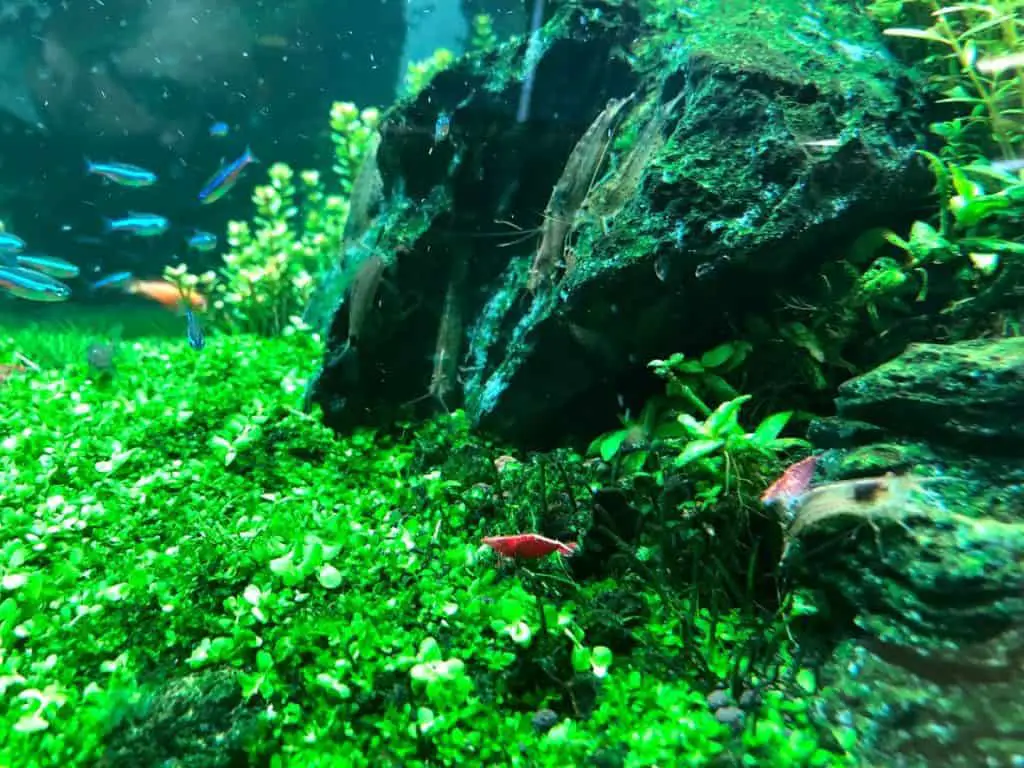For many aquarists, the question of whether or not pea puffers and tetras can live together in the same tank is crucial. With their unique characteristics, these two species have different needs regarding their habitat and dietary requirements—which means carefully considering compatibility before bringing them home is key. To help you determine if this type of setup could work for your aquarium, we’ve compiled an overview of what you should know about cohabitating pea puffers with tetras.
Pea Puffers can live with Tetras in a community tank if there is enough space, suitable water parameters, and adequately maintained. However, it is essential to remember that since Pea Puffers are predators, they may threaten the smaller Tetras. It is important to research the compatibility of the two fish species before attempting to house them together.
The first element to consider when setting up a community tank with both pea puffers and tetras is the size of the aquarium itself: while most tetra species prefer tanks with plenty of space to swim around freely, pea puffers tend to thrive in smaller environments. It’s also essential to bear in mind that having too much water volume may be overwhelming for some pufferfish varieties; they’re more comfortable in enclosed spaces, which gives them extra protection from predators or other aggressive fish. As such, opting for a medium-sized tank would be ideal as it allows each fish enough room without taking away any sense of security.
The next step is creating an environment that suits both types of fish. When decorating the tank, use natural plants, rocks, and driftwood pieces so that all inhabitants feel secure even when swimming out into open waters. Additionally, set up adequate filtration equipment since strong current flows are essential for keeping the water oxygenated and free from waste matter—vitally important elements for maintaining good health within the tank ecosystem. By following these simple steps, you’ll create an optimal living situation where your new finned friends can peacefully grow alongside each other!

Overview Of Pea Puffers
Pea puffers, also known as Carinotetraodon travancoricus are small freshwater fish native to Southeast Asia. These puffers can reach up to two inches in size and have a lifespan of up to five years. Pea puffers belong to the family Tetraodontidae which includes other species such as dwarf puffers, green spotted puffers, figure 8 puffers, and more.
It is important for aquarists considering pea puffer care that they understand their habitat needs. As tropical fish, these fish require temperatures between 74-82° F with pH levels around 6.5-7.5. They should be kept in tanks no smaller than 10 gallons with plenty of live plants, rocks, or driftwood for hiding places. Diet-wise, pea puffers are omnivores who eat mostly meaty food such as frozen brine shrimp and bloodworms; however, they will occasionally nibble on soft algae found on decorations or aquarium glass walls if given the opportunity.
When it comes to tankmates, due to their aggressive behavior towards other species, pea puffers usually do not make great community fish. Therefore it’s best advised that they’re kept alone or with other similarly sized nonaggressive fish like pencil fish or corydoras catfish that won’t bother them too much since this could cause stress for both the puffer and its tankmate(s).

Overview Of Tetras
Tetras are a widely-known group of fish found in many aquariums. Despite their popularity, it is essential to note the unique care requirements of tetra species before introducing them into your tank. This includes understanding their behavior, size, and diet.
Tetras come in various sizes depending on their species, ranging from 1 to 6 inches long. Most tetras will grow no larger than 2 or 3 inches so that they can be easily accommodated in most home aquariums. Tetras also have different behaviors; some may school, while others prefer being kept as single individuals. Individual needs should be considered when selecting the right species for your tank. Additionally, all tetras require meaty foods such as worms, shrimp, crickets, and insect larvae as part of their diet. To ensure optimal health and coloration, you should feed them a variety of proteins several times per day.
With proper preparation and knowledge about tetra care, these vibrant little fish can make wonderful additions to any freshwater aquarium! However, due to differences between pea puffers and tetras regarding size and behavior requirements, keeping both groups together in one tank environment is not recommended.
Compatibility Considerations
When considering whether to house pea puffers and tetras together, it is important to consider their temperament, aggression levels, water chemistry needs, tank size requirements, and social behavior. Pea puffers are feisty fish who can be territorial toward other species in the same aquarium. They require a soft substrate to protect their barbels when scavenging along the tank’s bottom. Conversely, Tetras have peaceful temperaments and prefer an environment with plenty of hiding places like plants and rocks.
Tank size should also be considered, as both species need much space to thrive. Puffers can reach up to 2 inches, while some larger tetra varieties can grow up to 3 inches long. For this reason, at least 20 gallons should be provided per pair or small school of either species. It is ideal if more room is available because each fish will have enough swimming space without feeling overcrowded or stressed out by its tank mates.
It’s also essential that water conditions meet the needs of both types of fish; pH between 6-7 and temperature between 75-82F (24-28C). If these parameters aren’t maintained properly, there could be health problems down the line due to poor water quality not suited for either species’ physiology. For this pairing to work, excellent filtration, frequent partial water changes, and careful monitoring must be practiced routinely. Additionally, providing ample vegetation will ensure neither species become too aggressive towards one other since they will each have their territory within the aquarium where they feel safe from danger or confrontation with their tank mates.
In short, setting up a successful community tank requires thoughtful consideration and planning so that all aquatic inhabitants live happily ever after!

Tank Requirements For Cohabitation
When considering whether pea puffers and tetras can cohabitate, tank size is one of the most critical factors. A minimum 20-gallon aquarium with plenty of space for swimming is recommended. Good filtration must also be established for both species to thrive. Tetras prefer a water pH between 6-7, while pea puffers require slightly acidic water conditions at 7.0 or below; because of this, it’s essential to monitor water parameters regularly and make necessary adjustments.
Tank decorations should provide hiding places for both fish since they are timid creatures, but keep them minimal as pea puffers like having open spaces for swimming around freely. The substrate type should also be considered, as sand would work best due to its softness, allowing pea puffers to comfortably search for food without damaging their barbels. Lastly, manage feeding times carefully so that smaller tetra don’t get eaten by the larger pufferfish before they can feed on their own. With careful consideration and preparation, these two species can peacefully coexist within an aquarium environment if given the right living conditions.
Diet And Feeding Habits
Regarding pets, diet and feeding habits can make or break the success of their cohabitation. Regarding pea puffers and tetras, several factors need to be considered when considering tank requirements for successful cohabitation.
The most crucial factor is the dietary needs of both species; while they may have different diets, a well-balanced meal plan should include the following:
- A variety of frozen foods, such as brine shrimp and blood worms
- Live plants or plant material for grazing
- Sinking pellets specifically designed for pea puffers
- Small flakes suitable for small tetras
Tetras prefer flake food over live food, but adding occasional treats like freeze-dried krill will help satisfy them nutritionally. Pea puffers require a higher protein content than tetras, so providing sinking pellets provides the necessary nutrition this species requires. Both species will benefit from having access to live plants and prepared fish food since they provide essential vitamins and minerals not found in commercial fish foods.
It’s also important to note that feedings should be done separately. Each type of fish receives its appropriate meal at least twice daily according to its nutritional needs and preferences. This ensures that neither species overeat nor starve due to competition for resources within the tank environment. And lastly, take care not to overfeed either species, as excess waste produced by uneaten food can cause water quality issues in an aquarium setting which could lead to health problems down the line if left unchecked.
Conclusion
In conclusion, we have seen that although pea puffers and tetras are both small freshwater fish, they may not be the best tank mates. Pea puffers require a much larger home than tetras, specialized diets, and water conditions. Although it is possible for these two species to live in the same aquarium, careful consideration must be taken regarding their specific needs.
Aquarists need to understand the unique requirements of each species when choosing appropriate tankmates. Even if all environmental parameters are met correctly, incompatibility issues could still be due to aggression or dietary needs. In addition, regular monitoring should take place to ensure that the fish remain healthy and content in their shared environment.
Overall, while cohabitation between pea puffers and tetras can work with proper planning, research must be done before introducing them into the same aquarium. With patience and dedication on behalf of the aquarist, these two species can peacefully share an aquatic habitat – however, it’s always better safe than sorry!
